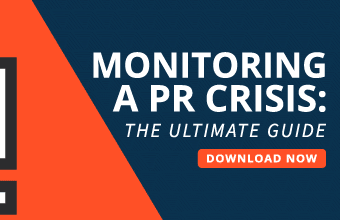A digital crisis can spread faster than ever. Social media amplifies public scrutiny, while algorithms prioritize shocking content, making reputational damage swift and severe. In times of intense pressure, companies must act quickly but thoughtfully.
Successful crisis management in the digital era demands a mix of real-time responsiveness and long-term planning. Organizations that fail to adapt risk losing control of their narratives altogether.
To help keep your business afloat, this article explores key strategies for handling crises in the digital age.

Image Source: Pixabay
Real-time Social Media Monitoring
When a crisis unfolds, social media can escalate it in minutes. Knowing how fast misinformation or negative sentiment spreads is critical. Platforms like Twitter, Instagram, and TikTok host vast discussions that immediately shape public opinion.
Companies can leverage dedicated monitoring tools like Brandwatch or Hootsuite to track brand mentions and relevant hashtags in real-time. Alerts on sudden spikes allow teams to act before narratives spiral out of control.
It is not enough to monitor. Brands must also analyze the context behind these mentions. Tools using natural language processing (NLP) help identify tone and sentiment, flagging urgent issues.
Multi-channel Communication Response
Responses are vital during a crisis, as they let you control narratives and calm concerns. However, one platform won’t cut it. Audiences spread across various digital spaces, from traditional news sites to social media platforms and email newsletters.
You need various communication channels to ensure you reach stakeholders where they engage most. For instance, an official statement on your website paired with updates on Twitter and LinkedIn covers both professional networks and the public sphere.
Consistency matters when using multiple communication methods. Therefore, keep the core message uniform across platforms while maintaining the tone and style of each channel.
Transparent, Proactive Messaging
People value honesty when a crisis hits. Concealing facts or offering vague explanations only deepens distrust. On the other hand, a clear, transparent message builds confidence and helps contain fallout before it spreads further.
The messaging needs to be more than reactive. Being proactive by providing regular updates to address concerns demonstrates control and commitment to resolution.
Timing is also crucial. You don’t want to wait too long to respond to an issue, which can allow the false narrative to take hold and impact trust. It is better to respond quickly with what you know, even if the full story isn’t yet clear.
Scenario-based Crisis Simulations
Effective preparation means practicing for potential disasters. Teams can’t just wait for a real crisis to strike before they test their response strategies. That’s where scenario-based simulations come in, letting organizations rehearse under realistic conditions.
Running through different hypothetical crises, from cyber-attacks to product recalls, helps uncover weak points in current plans. It’s like fire drills but tailored to communication and operational responses during emergencies.
After the simulation, teams should analyze the results and identify what works. This kind of review makes it easier to fine-tune future responses and ensures everyone knows their role when an actual situation arises.
Collaboration with External Experts and Agencies
Internal teams often lack the resources or experience to handle every aspect of a crisis. Therefore, companies might consider partnering with external experts or agencies specializing in crisis management. These firms bring a fresh perspective and specialized tools that internal teams may not have.
For instance, platforms like Limina help investment firms manage operational crises by automating key workflows. Their cloud-native system reduces manual tasks, freeing teams to focus on critical decision-making during high-pressure events. You can read more at Limina.com to understand how their tools function.
Beyond tech solutions, working with PR firms or legal advisors ensures your communication is accurate and aligned with industry regulations. These partners can help avoid potential legal missteps while ensuring the message you deliver is clear and consistent.
Leveraging AI-driven Data Analysis
Traditional data collection methods struggle to keep pace with the rapid flow of information during a crisis. Companies can replace older systems with AI solutions that analyze vast datasets in real time.
Tools like machine learning models help identify potential risks before they escalate by tracking subtle changes in public sentiment or spotting anomalies in operational workflows. Faster data processing allows for more informed decision-making when every minute counts.
AI can also predict outcomes based on historical data, helping organizations forecast the potential fallout and fine-tune their response strategies accordingly. This combination of speed and predictive insight strengthens overall preparedness.
Parting Shot
Digital crises hit harder and faster than ever. However, they also offer the chance to demonstrate resilience and build trust. Being prepared, agile, and transparent can turn potential disasters into opportunities for growth.
The tools and strategies are available, but only those who commit to evolving their approach will emerge stronger. With the right mix of real-time insights, proactive messaging, and expert collaboration, managing chaos becomes less about survival and more about progress.








